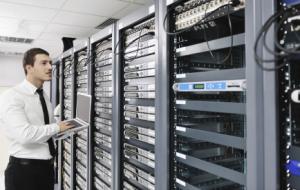Concerns over power demands of future giant data centres

Concerns over power demands of future giant data centres
The vast amount of power that will be needed to keep data centres storing information in the cloud is predicted to cause future 'brownouts' – or drops in voltage as a result of the demand for electricity.
The warning comes as industry giants such as Google and Amazon build huge new data centres which will use the same amount of electricity as cities of around 500,000 people. Currently, large data centres use around 40 to 50 megawatts of electricity but by the end of the decade, the figure is predicted to soar to around 120 megawatts per centre.
Dave Ward, a senior technology engineer with Cisco Systems, is concerned by the potential for brownouts, as he believes not enough is being done to prepare for the huge demand for power that is just a few years away. He told EE Times: “As a society we are not investing to get to the root of major power problems.”
He said that finding more efficient methods to provide energy for the expected data centre explosion will be essential. One of the possible solutions being researched is the use of silicon photonics, with products currently being developed by a number of companies. However, the technology is still in its early stages and prototypes are not expected until next year or 2015.
Mr Ward believes that the products could reduce the need for such giant data centres but he also raised concerns about the ability of silicon chips to handle the huge amount of electricity that would be needed, and said they may actually leak more power than they use.
The issues were raised at an event in the US looking at future technologies and concerns about the American infrastructure’s ability to handle the demand for power. The Computing.co.uk site said the situation is “even more acute in the UK” where a number of power stations are in the process of closing.
Businesses looking to move services into the cloud should evaluate the performance of their existing network and consider setting up a leased line or MPLS network.







